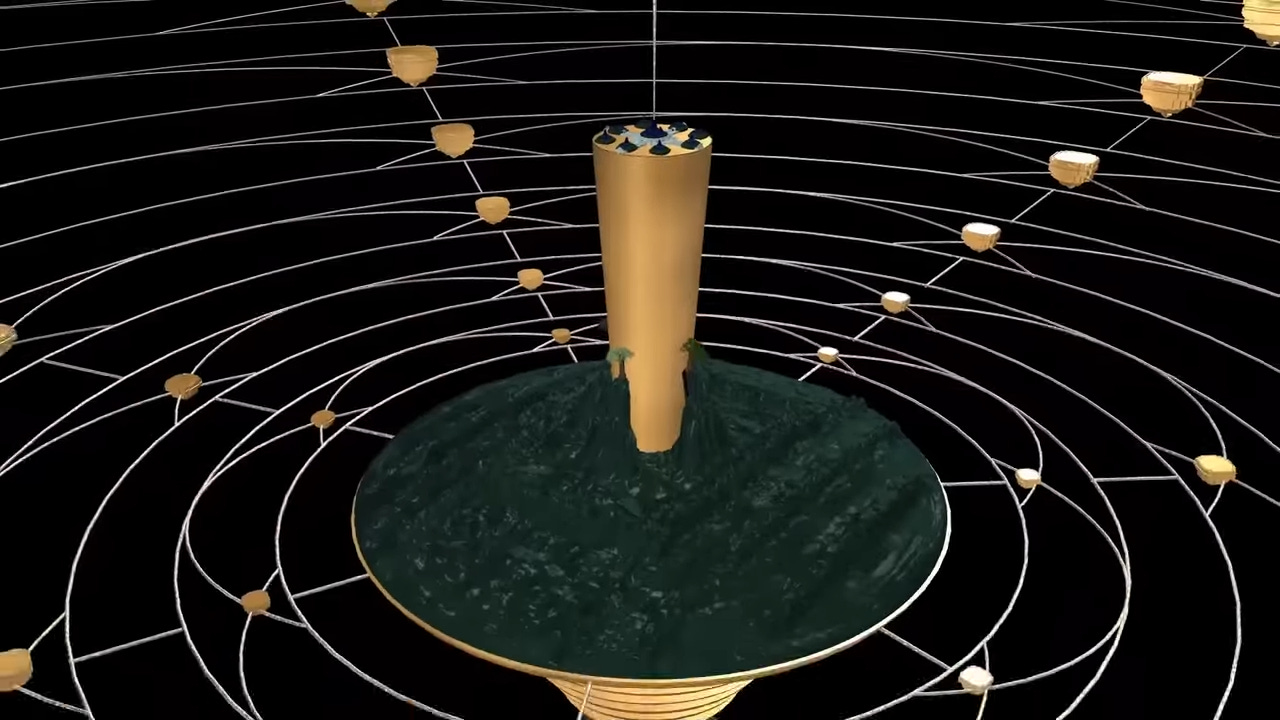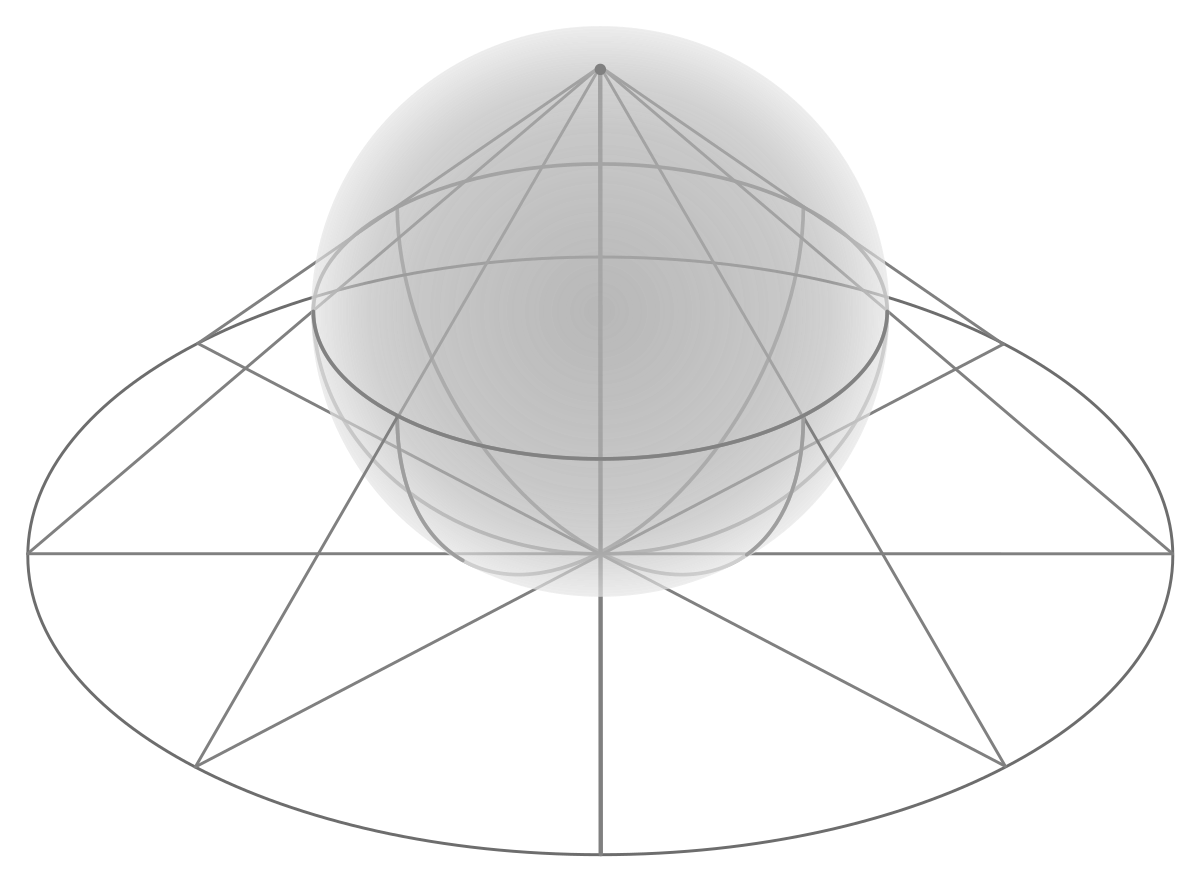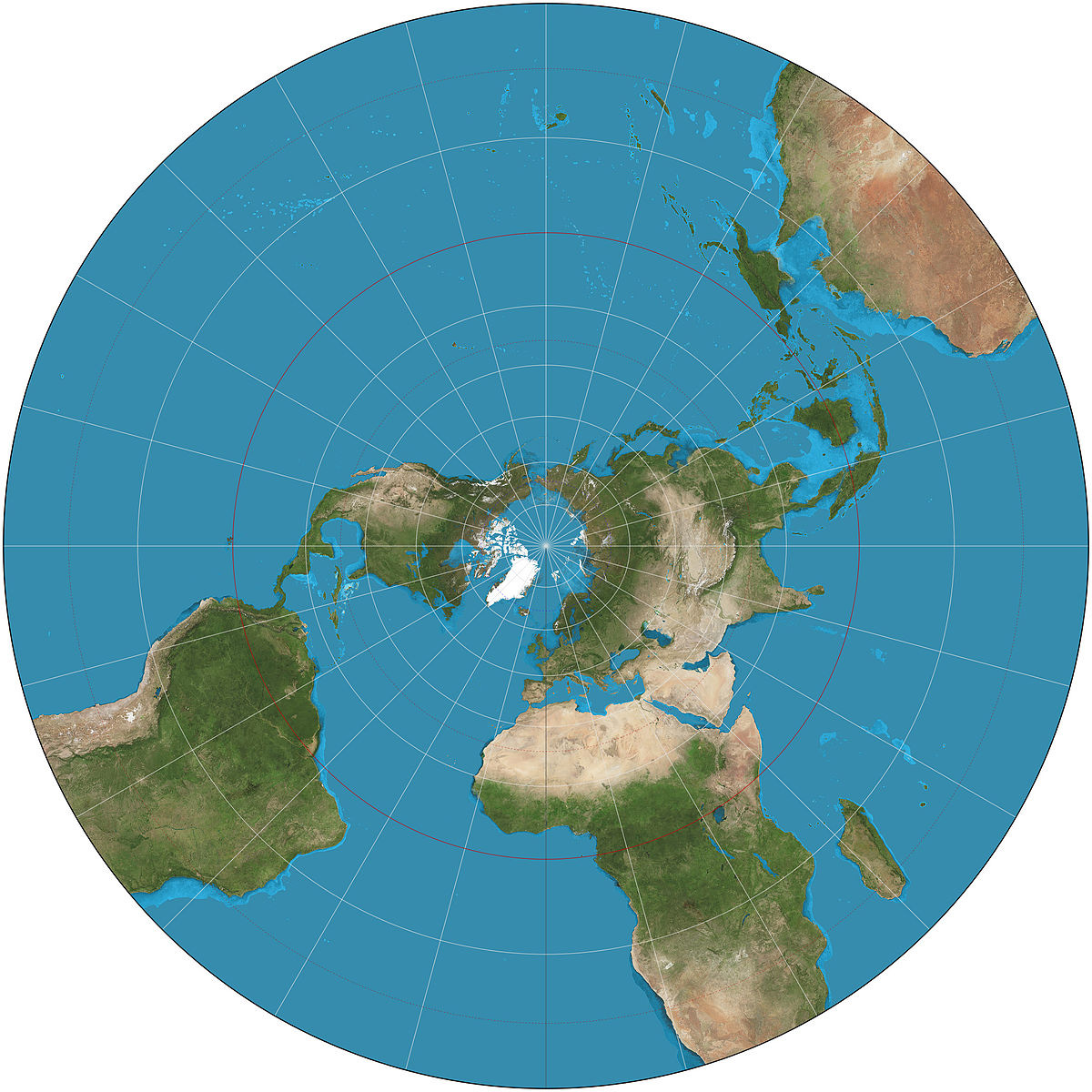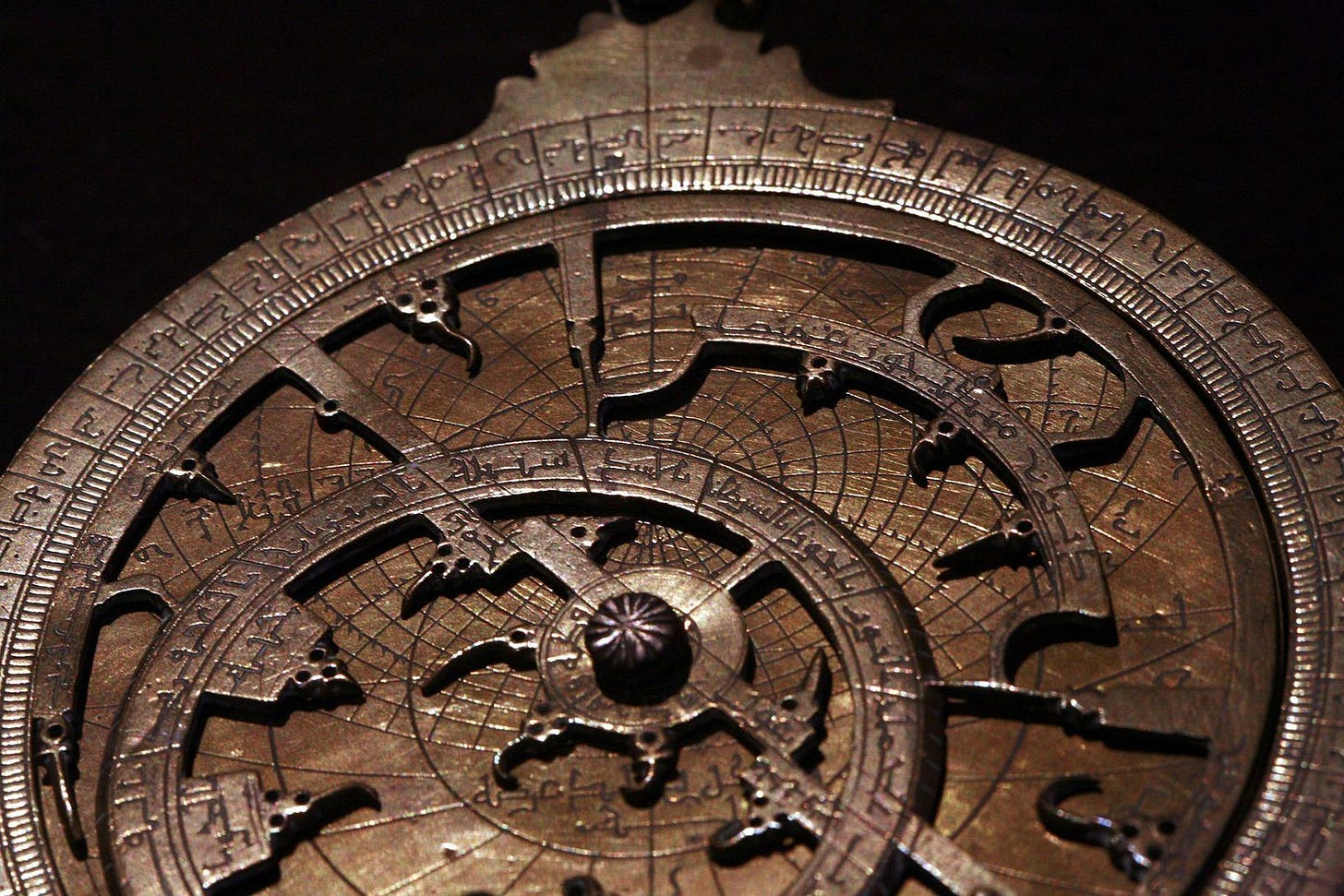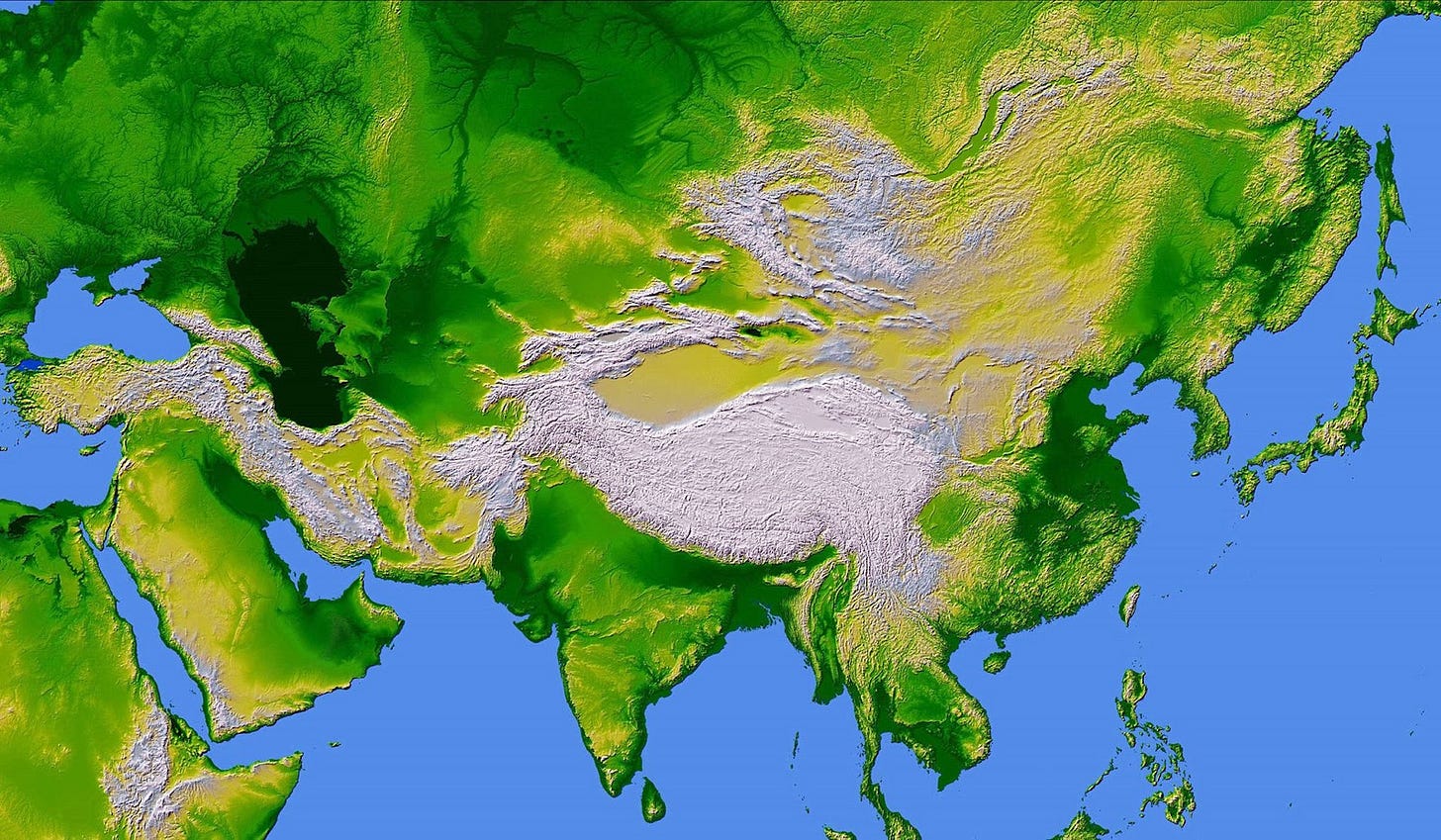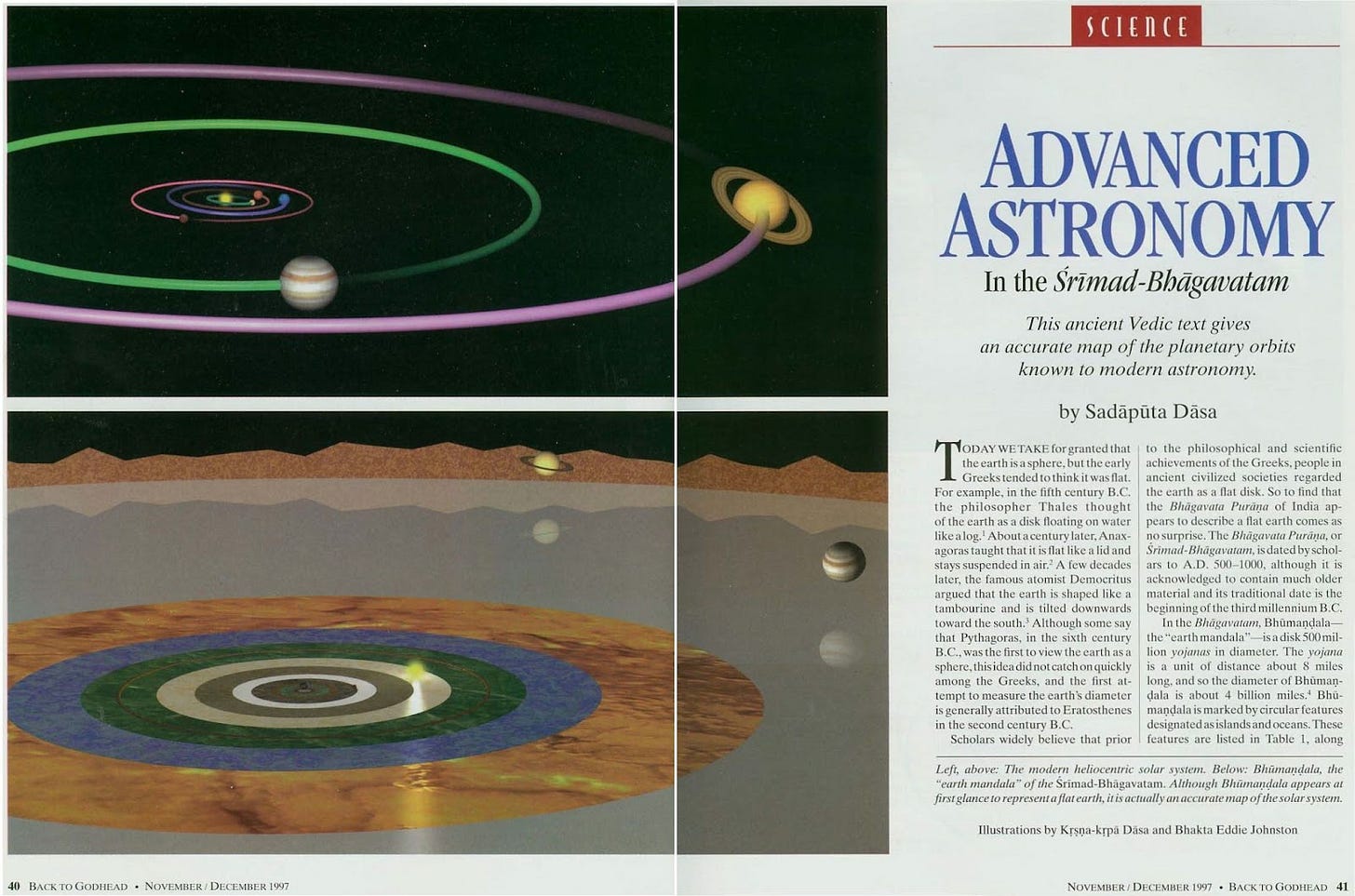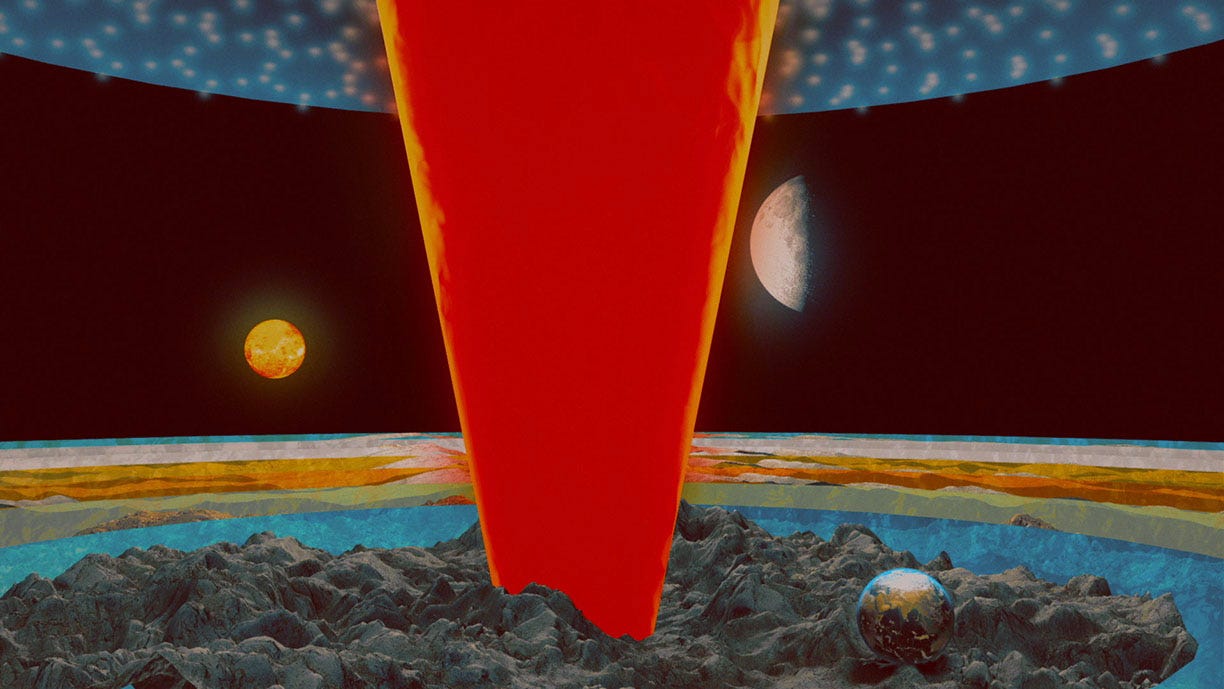Understanding Bhu-Mandala (The Intriguing Vedic Universe, ch.5)
One of the most notable features of the Vedic Universe is Bhu-Mandala, which comprises the intermediate planetary systems. Bhu-Mandala is situated in the middle of the universe and divides it in half.
'The Intriguing Vedic Universe' was my first book on Vedic cosmology, explaining the mysterious universe described in the Srimad Bhagavatam. It describes not just the physical aspects, in a level of detail that rivals modern science, but also the metaphysical aspects, the missing aspect that is missing in the modern perspective.
Chapter 5: Understanding Bhu-Mandala
One of the most notable features of the Universe described in the Vedas is Bhu-Mandala, which comprises the intermediate planetary systems. Bhu-Mandala is situated in the middle of the universe and essentially divides it in half, being the lower and dark part reserved for the Asuras, and the upper luminous part for the Devas. Human beings live close to the surface of this structure, on the luminous side.
Illustration from the ToVP showing a stylized representation of Bhu-Mandala
Our planet is situated close to the center of the gigantic structure, in a landmass called Jambudvipa, which is surrounded by other islands and oceans. In the middle, there is a mountain chain, which culminates in Sumeru Mountain. The Srimad Bhagavatam gives a detailed explanation of the different beings who live in different parts of this structure.
This is the part of the Vedic Universe that is most difficult to understand, especially because it brings to mind the idea of a flat Earth, which is obviously not the case. The Srimad Bhagavatam, for example, states that:
“People living in countries at points diametrically opposite to where the sun is first seen rising will see the sun setting, and if a straight line were drawn from a point where the sun is at midday, the people in countries at the opposite end of the line would be experiencing midnight. Similarly, if people residing where the sun is setting were to go to countries diametrically opposite, they would not see the sun in the same condition.” (SB 5.21.9)
This verse describes the basic notion of the Earth as a globe and the motions of the sun, resulting in the passages of days and nights as we can observe. When it’s midday in Japan it will be midnight in Brazil, for example. The same Srimad Bhagavatam also describes the movements of the sun that result in the passage of seasons. The main difference is that it explains from a geocentric perspective, while modern astronomy uses a heliocentric model. However, for practical purposes, both work for describing the movements of the sun and of the different stars and planets.
As stated:
"Let it be understood at the outset that it makes no difference, from the point of view of describing planetary motion, whether we take the Earth or the Sun as the center of the solar system. Since the issue is one of relative motion only” (Astronomer, Fred Hoyle)
"I can construct for you a spherically symmetrical universe with Earth at its center, and you cannot disprove it based on observations. You can only exclude it on philosophical grounds. In my view there is absolutely nothing wrong in that." (Physicist, George F. R. Ellis)
"We know now that the difference between a heliocentric and a geocentric theory is one of motions only, and that such a difference has no physical significance." (Astronomer, Fred Hoyle)
Apart from that, the Srimad Bhagavatam describes that in the higher dimensional Universe of the Devas, other intermediary planetary systems are on the same plane as our planet and can be accessed by sufficiently evolved beings through interplanetary passages. It’s described for example that Pariksit Maharaja, the grandson of the Pandavas, was able to visit other parts of Jambudvipa and receive tribute from the different kings living there.
For us, however, the other parts of Jambudvipa are inaccessible, since we don’t have the required level of consciousness and thus we are isolated on our little planet.
Sadaputa Prabhu explains that the description of Jambudvipa offered in the Srimad Bhagavatam actually includes four different explanations. According to one’s previous knowledge and area of interest, one could get one of these four understandings from the same explanation. This is possible due to the nature of the Sanskrit language, where the same words can have more than a meaning, and thus an expert poet is capable of composing sentences that have multiple simultaneous meanings.
One elementary example of this clever usage of the Sanskrit language is given in the first chapter of the Bhagavad-Gita, where Duryodhana, not wanting to displease either Bhisma or Drona (his two senior generals), used a clever construction to praise both at the same time, using the sentence “aparyaptam tad asmakam balam bhismabhiraksitam”. This sentence simultaneously means “Our strength is immeasurable because we are protected by Bhisma'' and “Our strength is insufficient because we are protected by Bhisma”. When Bhisma heard this sentence, he took the first meaning and was therefore encouraged. Dronacharya, on the other hand, took the second meaning, understanding that Duryodhana was glorifying him by minimizing the capacity of his rival.
Such clever usage of words is common in Sanskrit literature, however, in the Srimad Bhagavatam, it goes to a completely new level of complexity, explaining not less than four different models simultaneously in just a few chapters. This explains the many apparent contradictions one may find in it. Some verses describe the Earth as a globe, while others appear to describe a flat island. Some describe the structure of rivers that flowed in ancient India, while others describe mountains and other structures that are not found on our planet.
According to Sadaputa Prabhu, the first explanation is Bhu-mandala as a stereographic projection (or a planisphere) of our planet, taking the north pole as the center. This is commonly used to represent the features of a sphere on a map.
His research indicates these maps were used for astronomical purposes, helping one to understand the movements of the sun, planets, and important stars. Such planispheres were also used in instruments such as the astrolabe.
A planisphere is very convenient in such situations because it allows one to calculate the position of stars and planets, as well as land and maritime routes without entering into all the complexities of calculating the curvature of the earth. That’s basically what we do every time we use a map.
Astrolabe
The second explanation is of Bhu-mandala as a topographic map of south-central Asia, offering a basic description of the geography of our planet, with a focus on the area of the Himalayas, India, and adjacent countries. This model describes the different rivers that flowed there in antiquity.
The third explanation is it as a map of the solar system. In this explanation, the borders of the different islands of Jambudvipa describe the orbits of the planets of our solar system from the geocentric point of view adopted by the Puranas. Sadaputa Prabhu did a lot of research that confirmed that the borders of the islands of Bhu-Mandala, as described in the Srimad Bhagavatam roughly match the orbits of the planets of our solar system.
Article by Sadaputa Prabhu on Back to Godhead Magazine
Finally, the fourth explanation is as a map of the intermediate planetary system (which includes our planet), as observed and experienced by the Devas. Although this description doesn’t directly match what we see when we look into the sky, nor the information we can get by experimentation, it is actually the most important of all, because it helps us to elevate our consciousness.
In this way, in just a single explanation, the Srimad Bhagavatam offers astronomical, geographical, and mystical knowledge. Due to the complexity of the explanation, the details may appear contradictory at first, but as one delves into the details, the picture starts to suffice. Naturally, the geographical and astronomical part is covered by modern geography and astronomy, but the mystical knowledge about the subtle structures of the Universe is exclusive to the Puranas.
Illustration of Jambudvipa from the Rupanuga Vedic College.
This illustration of Jambudvipa from the Rupanuga Vedic College may help to get the picture. Our planet resides in a different dimension than the rest of Jambudvipa, therefore the rest of the structure is invisible to us, but if everything would be put together we would have a similar picture to what is depicted here. In this illustration, the Earth is relatively big in relation to Jambudvipa, but if the correct proportions were used, it would appear as just a small dot.
We can see that the Earth is positioned on the outskirts of Jambudvipa. The planet is spherical and slightly tilted. The sun and the moon orbit around it, resulting in the days and nights, as well as the passage of the seasons. Mount Sumeru is close to us, but it doesn’t block the light of the sun since it is in a different dimension; the passage of days and nights for us happens solely due to the movements of the sun around our planet, as we will discuss in more detail in chapter 7.
The Moon is higher than the Sun in relation to the plane of Jambudvipa. Higher than the Moon are the other planets of our solar system as well as the different stars.
We can see that the model of the Universe described in the Srimad Bhagavatam diverges from modern astronomy in certain aspects, such as the idea of a geocentric Universe instead of a heliocentric one, and the differences in the distance to the moon and different stars. However, when it comes to describing the passage of days and nights, as well as the seasons and the movements of stars and planets, both models work.
When we study the description of the Srimad Bhagavatam it’s important to understand that some verses describe the geographical features of our planet, geographical features of Jambudvipa, the orbits of the different planets of the solar system, and the characteristics and orbits of the sun and moon. In some situations, the same verse may mix elements of more than one model, like when it's described that the sun-god rides in his chariot around Bhu-Mandala. The chariot of the sun is part of the model of Bhu-Mandala, while the orbit being described can also be observed from our plane.
When we put everything together, we can understand that everything forms a single picture, but until we realize that, different verses appear to contradict each other.



